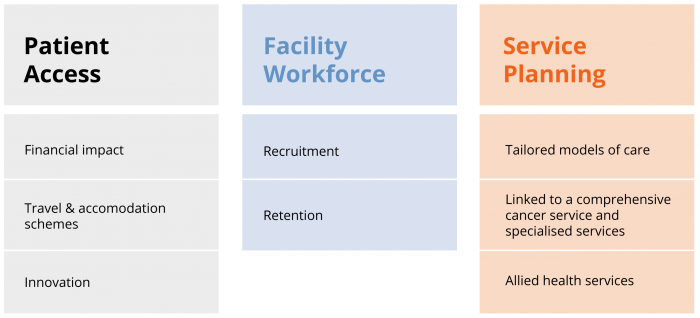Introduction
Providing equitable access to healthcare services for Australians living in rural and regional communities is a national priority. When compared to metropolitan populations, rural and regional patients have a number of specific challenges because they:
- Are more likely to present with late stage diagnosis;
- Have lower survival rates;
- Have greater difficulty accessing treatments of equal quality;
- May face a greater financial burden from cancer diagnosis and treatment1.
Research indicates that people with cancer in regional areas are 35% more likely to die within 5 years of diagnosis than patients in the city2. Death rate for patients with rectal cancer rises by 6% for every extra 100km a patient lives away from radiation therapy facilities3. There are numerous studies4-8 of health outcomes for cancer patients being compromised due to access to and/or distance from a treatment facility and access to the most clinically effective treatments.
Concerns highlighted in stakeholder submissions during the consultation process have been categorised into three main areas: patient access, facility workforce, and service planning, as illustrated in the figure below.
Rural and regional issues raised during the consultations
